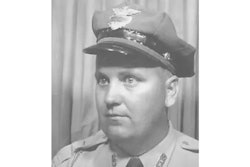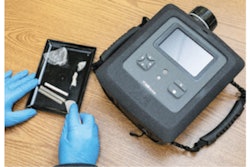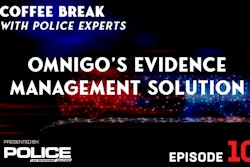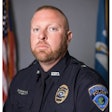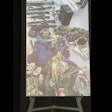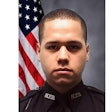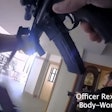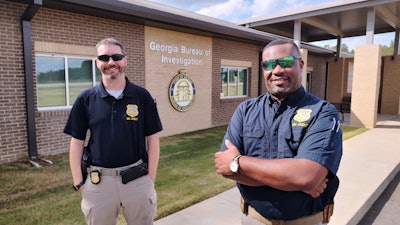 GBI Special Agent Daniel J. Burlingham, left, and GBI Special Agent Carl D. Murray provide specialized crime scene skills to assist fellow agents and local agencies in their assigned region of Georgia.PHOTO: Wayne Parham
GBI Special Agent Daniel J. Burlingham, left, and GBI Special Agent Carl D. Murray provide specialized crime scene skills to assist fellow agents and local agencies in their assigned region of Georgia.PHOTO: Wayne Parham
When local agencies in Georgia are faced with complex crime scenes, help is on the way immediately if they request assistance from the Georgia Bureau of Investigation. Not only will special agents help with the investigation, but crime scene specialists will process the scene and collect evidence.
Those crime scene specialists, who are strategically based around the state in GBI field offices, are special agents the same as their colleagues. But they are highly specialized in forensics and gathering evidence at crime scenes.
Around the state, the GBI staffs 15 field offices. Two crime scene specialists are assigned at each location typically, however, there are four in the Atlanta-area office.
“Crime scene specialists are like a jack of all trades because we receive additional training in photography, blood pattern analysis, shoot and reconstruction, and so forth,” says GBI Special Agent Carl D. Murray, a crime scene specialist for the past 11 years assigned to the Region 7 office.
The veteran lawman initially worked in narcotics when he joined the GBI 21 years ago. Then he transitioned to serving as a field agent in middle Georgia.
While he was assigned to the Perry, GA, office there was one crime scene specialist, but a need arose for someone to take on part-time duties to help with crime scenes. Murray stepped forward, getting his feet wet in forensics. Later he accepted a full-time crime scene specialist post at the Region 7 office in his hometown of Thomson.
In that field office he is one of two crime scene specialists who respond day or night, fair weather or poor conditions, small crime scenes or large, in support of GBI agents and local agencies across a multi-county area.
Training
They, and other GBI crime scene specialists, train at the National Forensic Academy at the University of Tennessee where they learn topics including scene mapping, shallow graves, investigation of bombs after detonation and how to look for and collect pieces of the device, and much more. Although that is the top forensics training program in the country, GBI still requires crime scene specialists to achieve state certification through Georgia Peace Officer Standards and Training Council (POST).
Response
When local agencies call for assistance, special agents and the crime scene specialists respond.
They must be ready with any equipment they may need at hand and could often be responding to a scene with little advance information. So, most times the forensics agents take everything – from a 3D scene scanner and drone to shovels and a pitchfork.
On Scene
Many times, Murray starts out in old school fashion by first walking into the scene with a notepad and a camera. He admits one local investigator usually greets him at the scene by saying, “Go in there and work your magic.” But the veteran crime scene specialist knows that what he does is not magic; it is science. That science can be as traditional as documenting blood splatter or trying to collect shell casings, but Murray’s work has changed with technology.
Throughout the years, agents would draw out the scene, make notes, and take many measurements. Now that is commonly done with a Leica C10 scanner that creates a three-dimensional record of the scene. A few years ago, it was even used to document the site of a plane crash with multiple fatalities.
“Basically, you set this scanner up and it scans and it takes in the entire scene for the most part, getting multiple measurements. And you can pull that, come back, download the information onto your laptop,” Murray says.
At least in the case of Murray and fellow crime scene specialist Special Agent Daniel J. Burlingham, they still take measurements in traditional fashion as a back up to the 3D scanner.
“There's a probability of something going wrong with anything. So, what we'll normally do is if we know we're going to take a scan of the scene, we'll go ahead and do measurements ourselves, jot them down, then scan the scene,” Burlingham says.
He points out, the time savings really comes after leaving the crime scene. Burlingham cites the example of a district attorney calling and asking for a measurement between two areas of a crime scene. Rather than digging through notes and reports, the agents can access the digital scan and quickly provide an answer.
The two agents also deploy a DJI Mavic Pro II drone, which can take measurements and document the scene.
“It'll fly up to a certain height, move a certain amount, take a picture, move a certain amount, take a picture, however way you program it. You can put all that data into a program called Pix4D and it's just like the Leica scanner, you can get 3D measurements. It makes a 3D scene of it in computerized format,” explains Burlingham.
But, the technology can be hampered by weather as Murray points out. In the rain the drone is not launched, and it is also likely the scanner will not be deployed.
 When agents respond in their crime scene truck they are prepared for any size or type of crime scene, day or night. The big truck carries everything from shovels to a 3D scanner and provides a workspace inside if needed.PHOTO: Wayne Parham
When agents respond in their crime scene truck they are prepared for any size or type of crime scene, day or night. The big truck carries everything from shovels to a 3D scanner and provides a workspace inside if needed.PHOTO: Wayne Parham
Crime Scene Truck
With drones, scanners, laser measuring devices, and more, the GBI crime scene specialists respond with an abundance of gear. The standard departmental vehicle is a Ford F-150 with a camper cover, but their main crime scene response vehicle is much larger and more capable of having everything that could be needed.
Built on a F-550 chassis, the crime scene unit hauls generators, portable canopies, digging tools, the drone, the 3D scanner, and extra scene lighting in addition to the lighting capabilities provided on the exterior of the truck. It is a workhorse vehicle that provides a base of operation for the forensics agents at a crime scene. It has onboard power, a workstation, and a printer inside as well.
“If it's a bigger scene, or like an outdoor scene at night, the crime scene truck, the big truck, is equipped with pretty bright lights that we can use to illuminate the scene. And it is just bigger and it's just a lot easier to work out of that and more is carried on that truck than what we can carry in our truck,” says Burlingham.
In most cases, the crime scene specialist agents will deploy the big truck.
“I'd say probably about 85% to 90% of the time we'll come here pick up the big truck. So that means with the small information we get heading out to a scene we don't know what we're going into. So, it is best to be over prepared,” Burlingham explains.
Evidence
With gear at hand, Murray and Burlingham are ready to face any scene regardless of how much evidence there is to collect.
“It can vary anywhere from a handful to 50 or 60 pieces depending on what the situation was, where it was, and how many individuals were involved,” says Burlingham.
“I may have been in scenes where I know, no doubt, 200 articles of evidence or more were collected and hours and hours working,” Murray adds.
But their work is not done when they leave the scene. Once back at the field office, they must continue to process the evidence collected.
“Once we're finished with the scene and we take the items of evidence back here to our office to put inside our evidence room it might be something that we have to further examine such as did we collect the firearm or did we collect the casings. We're going to fingerprint those items or do DNA,” says Murray. “That gun is going to produce additional items of evidence, and if you have back splatter on it you’re going to be collecting blood samples off of it.”
Telling the Story
Faced with sometimes long hours, inclement weather, tedious processing of evidence, and dealing with tragic scenes, these two agents and others like them around the state are on a mission. They understand the significance of what they do.
“Personally, I just take a step back and see it as me being the voice for that victim, telling that victim’s story because they can't anymore. So that way when I go into court, since they can't speak on their behalf, I kind of explain ‘This is what we believe happened in their last moments’. But it also kind of helps the family and gives them a little bit of closure as well,” Burlingham says.
Murray also points out that information provided by crime scene specialist can prove to be an asset to the investigators in the immediate aftermath of a crime when they question suspects and know what science, according to the work of the crime scene specialists, says happened.
Both Murray and Burlingham also understand the impact they have on assisting local jurisdictions with investigations.
Murray recalls a sheriff years ago saying he could “Expand his manpower just by making one call and asking the GBI to respond and assist.”
GBI Crime Lab
The GBI also assists Georgia departments from around the state by providing a statewide crime lab. It is the second-oldest statewide crime lab in the country and receives more than 100,000 lab requests each year.
The state crime lab, operated by the GBI Division of Forensic Sciences, first began processing evidence in 1952 and now has grown to include seven locations strategically placed around the state.
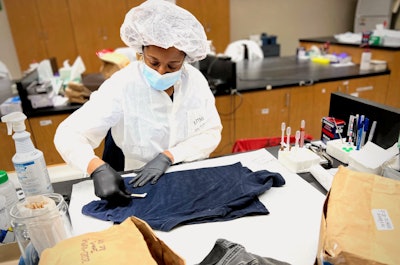 A GBI forensic biologist in the state crime lab examines evidence for biological fluids.PHOTO: GBI
A GBI forensic biologist in the state crime lab examines evidence for biological fluids.PHOTO: GBI






